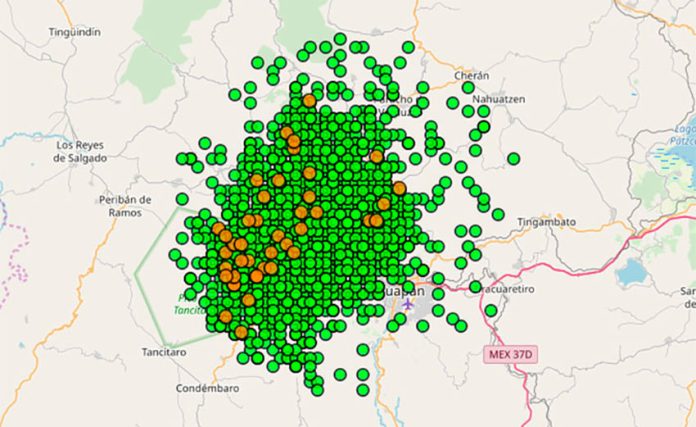Increased seismic activity in Michoacán since the start of last month will not lead to the birth of a new volcano, National Autonomous University (UNAM) scientists have concluded.
There have been more than 3,000 earthquakes with magnitudes between 2.6 and 4.1 since January 5 in an area northwest of Uruapan near the Paricutín Volcano, according to the National Meteorological Service.
About 50 experts from several universities and government agencies traveled to the area to carry out tests to determine whether the earthquake swarm – as a sequence of similar magnitude seismic events occurring in a local area in a relatively short period of time is known – is related to tectonic or magmatic events.
A magmatic event occurs when magma – the molten or semi-molten material from which igneous rocks are formed – moves horizontally or vertically beneath the surface of the earth. Large volumes of magma can potentially break through the surface and form a volcano, as occurred in Michoacán in 1943 with the sudden emergence of the Paricutín Volcano.
Servando de la Cruz Reyna, a researcher in the volcanology department of the UNAM Institute of Geophysics, said that magma has been identified as the most likely cause of the earthquakes in Michoacán but ruled out the possibility of the birth of a volcano because the fracturing of the crust of the Earth has been minimal.
“It is suggested that the source of the force is the movement of magma but at depths of 10 kilometers or more. This is very common in volcanic areas,” he said.
De la Cruz said that scientists have concluded that most of the magma movements are horizontal rather than vertical and for that reason the molten material won’t ascend to the surface of the earth.
Hugo Delgado, director of the Institute of Geophysics, explained that the expert team led by the UNAM scientists carried out a range of studies before ruling out the possibility of the birth of a volcano. They included taking measurements with magnetometers, measuring the levels of carbon dioxide in the soil, testing for the presence of radon, analyzing samples of water collected in the area and looking at deformations in the surface of the Earth.
De la Cruz said that earthquake swarms have occurred in the same region of Michoacán on four occasions but only the first series of earthquakes resulted in the formation of a volcano.
“The first was in 1943 and culminated in the birth of the Paricutín Volcano. Subsequently, there were three others in 1997, 1999 and 2006,” he said, adding that the characteristics of the 2006 earthquake swarm were similar to those of the current one.
Carlos Gutiérrez Martínez, an official with the National Disaster Prevention Center, said that there has been constant communication between the federal government and the UNAM Institute of Geophysics as the studies of the earthquake swarm were taking place.
He explained that government officials have attended technical meetings with the scientists and have been careful not to overreact to the increased frequency of earthquakes in the area.
Source: El Financiero (sp)
